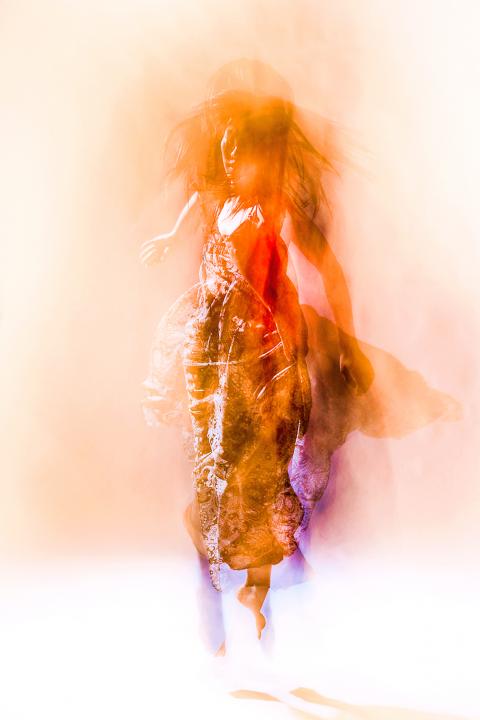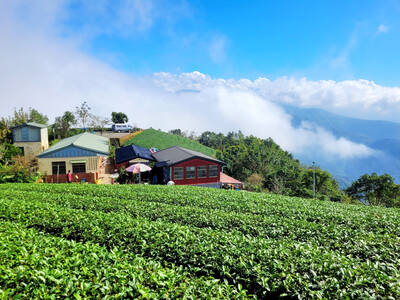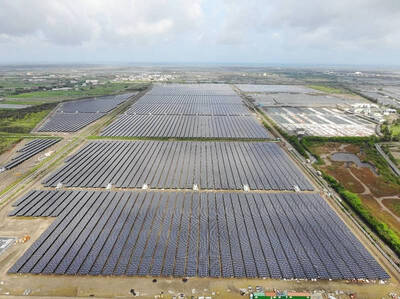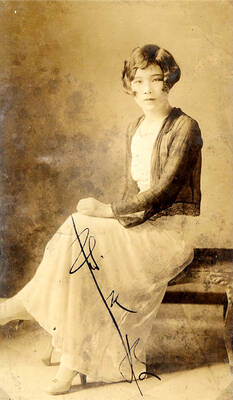Next week sees the start of an ambitious dance project at Huashan 1914 Creative Park as Taiwanese dancer/choreographer Chou Shu-yi (周書毅) adds another title to his resume — executive producer/nurturer.
Chou has launched a choreographic collective called the 2011 Next Choreography Project I (下一個編舞計畫 I), which will present two programs over the next two weeks under the theme “Seeing the next dance generation.” The first weekend will feature six female dancer/choreographers performing their own solos, and the second weekend eight dance students will present six solos and two duets.
The impetus of the program has been two questions that Chou has been asking himself — and his friends — for several years: What is choreography and why do we choreograph in Taiwan?

Photo Courtesy of Chen Chang-chih
Basically, it boils down to the issue of whether there is such a thing as a “Taiwanese choreographer” identity for Chou’s generation, the way Cloud Gate (雲門舞集) founder Lin Hwai-min (林懷民) came to define his generation.
Most of the people Chou has debated these questions with are graduates or students at the nation’s two premier performing arts institutes: his own alma mater, National Taiwan University of Arts (國立臺灣藝術大學) in Banciao, or Taipei National University of the Arts (國立臺北藝術大學) in Beitou. No matter where they went to school, they felt they didn’t get much training in creation, and instead ended up learning as they went along, through collaborations and discussions with other dancers and artists.
Chou told the Taipei Times in an interview in January last year, after he won the first Sadler’s Wells Global Dance Contest, that the main reason he chose to go to the Banciao school was because it had a student choreography contest. Even before he graduated seven years ago, he had begun building a list of works, for himself and later for companies such as MDans (now Horse, 驫舞劇場) and the Scarecrow Contemporary Dance Company (稻草人舞團), and taken part in several competitions. Now, having gained a reputation both at home and abroad, he wants to help others find ways to make their mark.
The six women featured in next week’s show (starting Thursday night), titled To Create — the Next Landscape (創造︰下一個風景), will be familiar to fans of Taipei’s contemporary dance world, either as dancers with various companies or choreographers or both: Yu Yen-fang (余彥芳), Lin Yu-ju (林祐如), Kuo Chiu-miao (郭秋妙), Yeh Ming-hwa (葉名樺), Liao Yi-ching (廖苡晴) and Tien Hsiao-tzu (田孝慈). Some are old friends of Chou’s, like Lin and Yeh, others he met only recently.
“Yen-fang, I never worked with her before. I saw her piece at the American Dance Festival; she’s worked in Germany and with the Bebe Miller Company, so I asked her if she wanted to work with us,” he said in a telephone interview this week.
The eight students whose work will be performed in the second stage the following week, in a program titled Discovery — Fresh Creative People (發現︰創作新鮮人), were selected from 30 students in dance programs around the country who auditioned through an open call in April, sending Chou DVDs of their work.
Both groups were challenged to think about “what’s next,” whether in terms of choreography and dance in Taiwan or their own life. Each choreographer could pick their own collaborators for sound, costume and visual art; then they came together as a group to discuss their work and the programs. One thing Chou hasn’t had to worry too much about for a while with his own work has been ticket sales. As Next Choreography Project producer, it’s a big concern. The first weekend is selling well, he said, because the six women already have something of name in Taiwan’s dance world. It’s the second weekend he’s worried about, admitting sales have been slow.
“When I did my first piece I was still a student. It’s very important to give students a chance, because you never know who will be the next ‘great,’” he said.

Every now and then, it’s nice to just point somewhere on a map and head out with no plan. In Taiwan, where convenience reigns, food options are plentiful and people are generally friendly and helpful, this type of trip is that much easier to pull off. One day last November, a spur-of-the-moment day hike in the hills of Chiayi County turned into a surprisingly memorable experience that impressed on me once again how fortunate we all are to call this island home. The scenery I walked through that day — a mix of forest and farms reaching up into the clouds

With one week left until election day, the drama is high in the race for the Chinese Nationalist Party (KMT) chair. The race is still potentially wide open between the three frontrunners. The most accurate poll is done by Apollo Survey & Research Co (艾普羅民調公司), which was conducted a week and a half ago with two-thirds of the respondents party members, who are the only ones eligible to vote. For details on the candidates, check the Oct. 4 edition of this column, “A look at the KMT chair candidates” on page 12. The popular frontrunner was 56-year-old Cheng Li-wun (鄭麗文)

“How China Threatens to Force Taiwan Into a Total Blackout” screamed a Wall Street Journal (WSJ) headline last week, yet another of the endless clickbait examples of the energy threat via blockade that doesn’t exist. Since the headline is recycled, I will recycle the rebuttal: once industrial power demand collapses (there’s a blockade so trade is gone, remember?) “a handful of shops and factories could run for months on coal and renewables, as Ko Yun-ling (柯昀伶) and Chao Chia-wei (趙家緯) pointed out in a piece at Taiwan Insight earlier this year.” Sadly, the existence of these facts will not stop the

Oct. 13 to Oct. 19 When ordered to resign from her teaching position in June 1928 due to her husband’s anti-colonial activities, Lin Shih-hao (林氏好) refused to back down. The next day, she still showed up at Tainan Second Preschool, where she was warned that she would be fired if she didn’t comply. Lin continued to ignore the orders and was eventually let go without severance — even losing her pay for that month. Rather than despairing, she found a non-government job and even joined her husband Lu Ping-ting’s (盧丙丁) non-violent resistance and labor rights movements. When the government’s 1931 crackdown